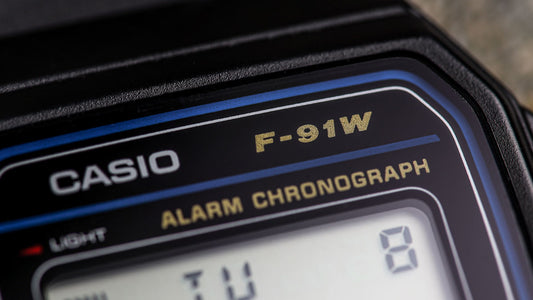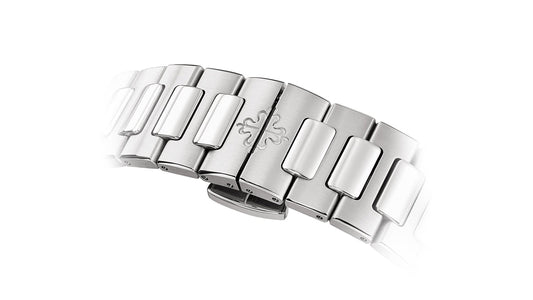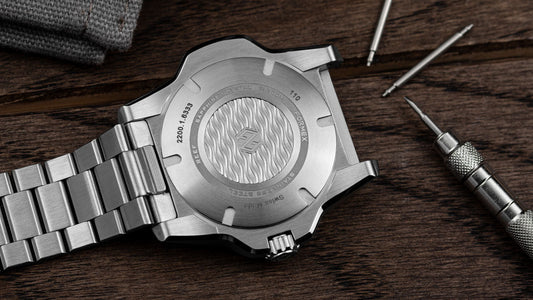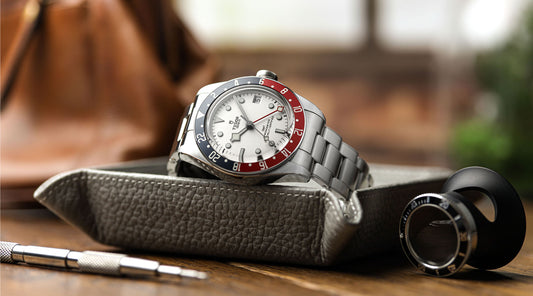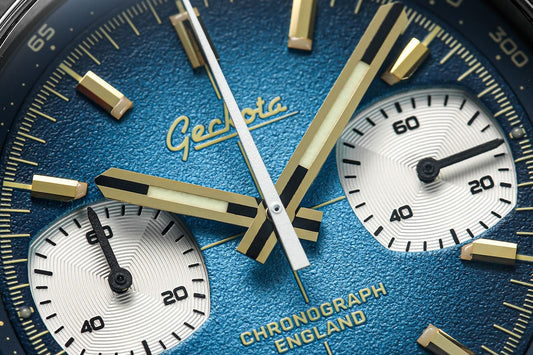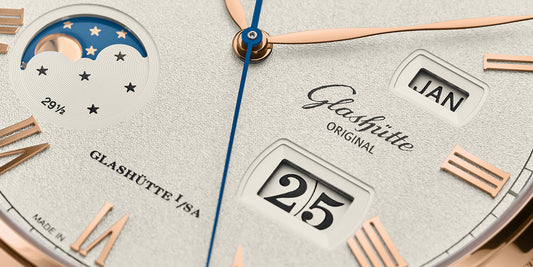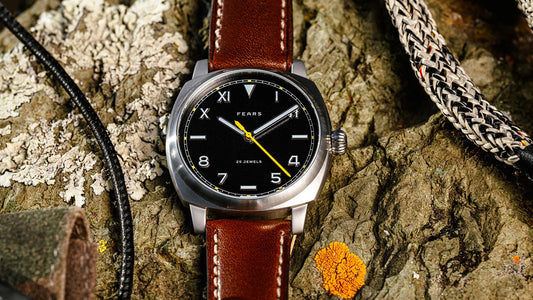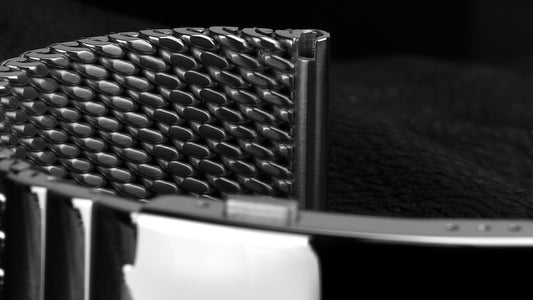For a second time, I am lucky enough to have been sent the first of a new Timefactors watch, ahead of its release sometime towards the end of this year. Eddie Platts, owner of the Smiths brand (along with others under the Timefactors umbrella) has entrusted me with serial number 001, which will eventually be his own personal example. I have taken the opportunity to wear it for a few days, on a variety of straps, so that I can make a full assessment of it.
Like many of the Timefactors products, this one has been discussed and anticipated for a while, but unlike some, it was presented in the TZ-UK forum by Eddie as a fully formed concept, in early 2021, under the title “Look what I have been playing with”.
During Eddie’s ownership of Smiths, the brand has offered what one might term a Rolex Explorer tribute, called the Everest, since 2011. Timefactors used to be a Zeno dealership, and their own Explorer was clearly a model that sold well and that Eddie admired. When Zeno discontinued it, Eddie took the opportunity to develop his own alternative, and it has been in production ever since.
The Smiths Everest range has grown from the first version, to include smaller examples, a version with a gilt dial, a cream dial and even a Jubilee one celebrating Eddie’s 25th year in the business with an Aventurine dial. The case was also used for a Commando model, named for another vanishingly rare Rolex. It is fair to say the Everest has been a mainstay of the Timefactors range.
It is (perhaps a little mischievously) named for the fact that Sir Edmund Hilary’s watch on the first successful Everest ascent was a Smiths (and not the Rolex that their advertising might have you believe). In fact, many of Hunt’s successful 1953 expeditions were equipped with Smiths watches, and although Tenzing Norgay owned a Rolex, gifted him by a previous expedition, there is no pictorial evidence for him wearing it on the triumphant first ascent.
Eddie started this project with the title “Everest Diver”, seeking to broaden the range into another style. An increase in Water Resistance and the addition of a bezel were required but kept the 3,6,9 dial layout.
Although the design was independently derived, one can readily spot similar features to vintage Rolexes generally known as the “Explorer Dial Submariners”, which were produced in very small numbers from the 1950s. For a start, it was to be a traditional case with drilled lugs but without guards around a relatively modest-sized crown (features evident in the 6204). The dial is gloss, with a red triangle on the bezel (like the 6538). Rather than plain indices on the quarters, numerals are used at the 3, 6 and 9 positions, like some rarer 6358 examples, but there are several Rolex Submariner references with similar dials.
The dial print is gilded, with Mercedes hands and a rivet bracelet to keep with the vintage theme. But some features are decidedly modern. The fully indexed and lumed bezel, for instance, is something that Rolex has not even produced to this day.
 As the design progressed, it became clear that the Everest name might not be relevant to a watch so clearly aimed toward the ocean rather than mountains, and a new moniker was needed. Because of the (slight) similarity of this concept to the Submariner that Sean Connery wore in Dr No, I suggested Eddie call it “Commander”, Bond’s official naval rank. The idea stuck.
As the design progressed, it became clear that the Everest name might not be relevant to a watch so clearly aimed toward the ocean rather than mountains, and a new moniker was needed. Because of the (slight) similarity of this concept to the Submariner that Sean Connery wore in Dr No, I suggested Eddie call it “Commander”, Bond’s official naval rank. The idea stuck.
Eddie’s first render offered a 36mm diameter case, in keeping with the current Everest range. This expanded to 38mm shortly after, as he felt the dial would be too small once the case had a rotating bezel. A few other design tweaks later, and we have what I am reviewing today, which is ready to take its turn for release through the Timefactors shop, planned toward the end of 2022.
Eddie’s output is highly sought after at the moment, and the shop is only open for short periods every fortnight until enough orders have been placed to keep the boss busy packing and sending until the next opening.
If you plan to buy one, then best to plan your attack and be prompt, some of the shop opening windows are as short as a couple of minutes. You have been warned.
On The Wrist
When you first put the Commander on, the first impression is one of jewel-like sparkle. The gilt minute track and branding catch the light, as does the sunburst texture under the gloss black of the dial. The folded gold hands glint and the slightly domed crystal is treated with AR coating on the inside, so it too reflects light, as does the high gloss of the ceramic bezel. It fascinates in sunlight.
 Once you’ve appreciated the sparkle, you notice the size. At 38mm in case and bezel diameter, it is one millimetre smaller than most of the recent trends for more modest dive watches, and it does wear true to size, as the bezel indices, aligned with the dial minute track, serve to make the dial look slightly smaller than it actually is.
Once you’ve appreciated the sparkle, you notice the size. At 38mm in case and bezel diameter, it is one millimetre smaller than most of the recent trends for more modest dive watches, and it does wear true to size, as the bezel indices, aligned with the dial minute track, serve to make the dial look slightly smaller than it actually is.
The 45mm length from lug to lug will allow this to sit evenly on almost any wrist size. My wife tried it on when it arrived and nodded approvingly. Rare praise indeed from her, given the number of watches that have been damned by the phrase “looks just like your other ones”.
The profile on the wrist is very appealing, as most of the caseback fits into the wrist, and one is left seeing the slight bulge of the case sides, the modest square castellation of the bezel edge, and the sloped facets of the bezel and domed crystal. There are no slab sides here, it looks very elegant.
The thickness is still modest at 13.4mm, despite the fact that the WR has increased from the original intended 200m to 300m. Eddie increased this specification to lend it true dive capability, rather than leaving it with a merely “sports” rating. Much of this thickness is not evident on the wrist, and the case is only 9.4mm from the rear of the case side (excluding the caseback) to the front edge of the bezel.
 The dial balance is very apparent. Initially, the Commander name was intended to be on the dial above 6, and a prototype was made up in that format. Perhaps because the font was a little large, it drew a few negative comments, and the name is now engraved on the back of the watch, with “300 Metres” printed where it was on the dial. It balances the Smiths Deluxe branding at 12 very well. The hands sit nicely over the dial, only the width of the minute hand appearing a hair’s breadth broader than one might expect on a vintage example, but it works well with the scale of the numerals, and the whole balance is very pleasing.
The dial balance is very apparent. Initially, the Commander name was intended to be on the dial above 6, and a prototype was made up in that format. Perhaps because the font was a little large, it drew a few negative comments, and the name is now engraved on the back of the watch, with “300 Metres” printed where it was on the dial. It balances the Smiths Deluxe branding at 12 very well. The hands sit nicely over the dial, only the width of the minute hand appearing a hair’s breadth broader than one might expect on a vintage example, but it works well with the scale of the numerals, and the whole balance is very pleasing.
In terms of colouring, the only true colour is the deeply engraved bezel triangle, which is a lovely, deep crimson, that looks very restrained in sunlight and almost disappears in dimmer conditions.
All of the lume is a vintage honey, making the dial ever so slightly darker than that on the hands and the bezel, which serves to highlight them nicely. This contrast is relatively hard to spot, but again, it balances well.
The glow from this lume (X1 C3) is commendably bright after a swift light-to-dark transition, but I have noticed that it does dim over a few hours or so. Perhaps the vintage colouring reduces its longevity a little.
The bezel is uni-directional and has 120 clicks, but almost sounds like 240 clicks if you move it slowly. It moves positively, clicking crisply as it does. The scale is easily read because although the lumed numerals are relatively small, the font is precise and slim enough to be very legible.
From the initial drawings, the bracelet has kept the rivet-style endplates, but there are no rivets to be seen on the plain polished ends, making it look like a simple 3-link Oyster from a distance, but a 5-link when examined closely. The main surfaces are all brushed, and the texture is very evenly applied, with a very crisp transition to the polished edges.
 The clasp is an all-machined affair, signed, with a fold-over security clasp and twin push button release. There are 6 micro adjustment positions on the clasp, covering 16mm or so, comfortably more than the 11mm that each link occupies, so there is no need for any half-links, and indeed there are none. The links are screwed in place for security.
The clasp is an all-machined affair, signed, with a fold-over security clasp and twin push button release. There are 6 micro adjustment positions on the clasp, covering 16mm or so, comfortably more than the 11mm that each link occupies, so there is no need for any half-links, and indeed there are none. The links are screwed in place for security.
The caseback is very nice, with a central “gold” medallion, bearing a polished Smiths Crown over a stippled ground. A very nice gilt detail to compliment the quality of the watch.
Strap Choices
Pairing this with straps is easy. I tried Military Nylon, Perlon, Leather (flat and padded), Tropic rubber and fabric. Changing over is easy with the drilled lugs. It suited all types of straps, although I thought it looked its best with more subdued colours, to allow those gilt details to sparkle without distraction. I also thought the case was better flattered by a greater taper than some straps (I preferred a 20mm to 16mm taper, rather than 18, which seemed to shrink the case). It is worth noting that, because the drilled lugs are 20mm apart, users can consider using single-shoulder spring bars, for ultimate security.
 But strap choice is entirely subjective, and I am sure new owners will enjoy going through their strap box to find what they consider to be the best match.
But strap choice is entirely subjective, and I am sure new owners will enjoy going through their strap box to find what they consider to be the best match.
Conclusions
At the moment we are being treated to a plethora of re-issues and re-interpretations of classic models from the past. They are being more or less successfully updated using modern specifications and manufacturing techniques to make them function better, and in more situations than the vintage models could ever dream of. Updated heritage seems to cover almost every release from brands like Longines, Zodiac and many others.
The Commander fits into this trend with style and capability. It looks great, and at 38mm diameter, 300m WR and resistant to 20,000 A/m of magnetism this is a tad smaller than many of the recent heritage offerings, and at the same time more competent for robust use. It is a compelling combination.
And although this is not a re-issue of a Smiths piece from the brand’s own heritage, it is jammed full of details from vintage classics, and true to vintage size. As a result, it is a design that just looks “right”, in a quite traditional manner.
This really is a watch that can accompany you anywhere, there is enough glitz and glamour in the polished surfaces and gilt details to dress up, however, it is tough enough for all your adventures, and sized to fit under any cuff.
Commander Bond would approve, and might even be able to bring this one back to Q in one piece.







